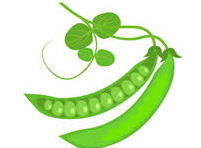Introduction
Crop rotation is nothing new. It has been used since medieval times when there was the practice growing cereals followed by vegetables and then leaving the land fallow for a year to graze livestock.
The two main reasons are to prevent the build-up of crop diseases and to refresh the soil.
There are many variations of the rotation plan largely determined by the size of plot and preferences for the type of crop to be grown. Presented here is a general purpose four year plan.
Crop Groups

Potato Family: Potato, tomato, pepper,aubergine.
Note Since tomatoes are very susceptible to blight
which can transfer to potatoes it is better to keep them seperate, possibly undercover
in a polytunnel.

Onions and Roots: Onion,shallots,garlic,leeks,beet,
carrot, parsnip. Note 1: Over-wintering onion and garlic can be planted as
soon as the potato crop has been harvested and the ground cleared. Note 2:
Swedes and turnips are brassicas.

Legumes: Peas, broad beans, French beans, runner beans.
Note: Climbing beans can be grown year after year
in the same spot without affecting the soil. Therefore if available a sheltered area might be found
to erect canes to minimise damage from wind.

Brassicas: Cabbage, Brussels Sprouts, cauliflower, kale, swede, turnip.
Four Year Plan
Area A
Area B
Area C
Area D
Year One




Year Two




Year Three




Year Four




